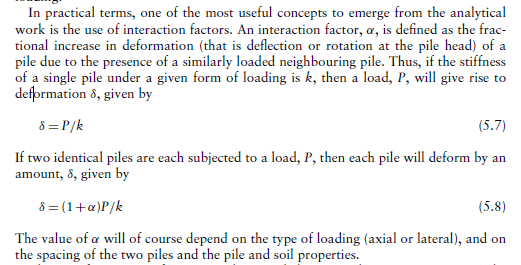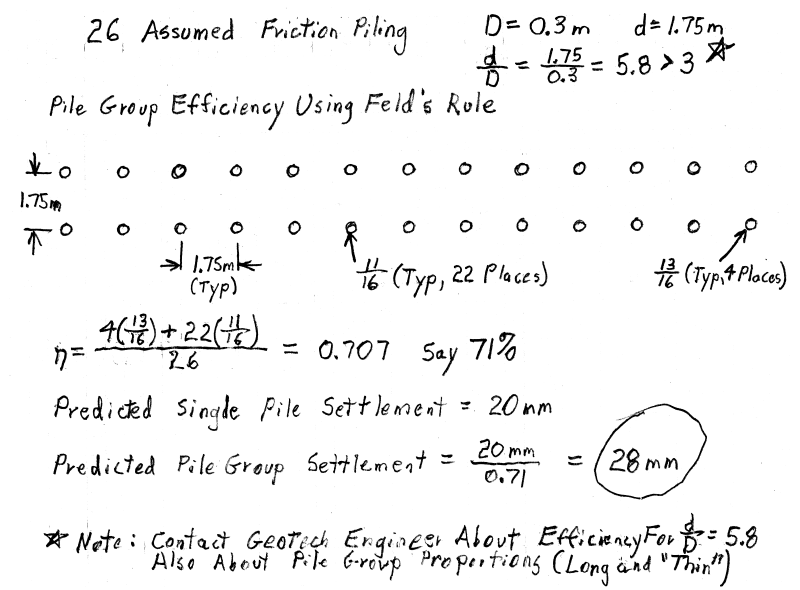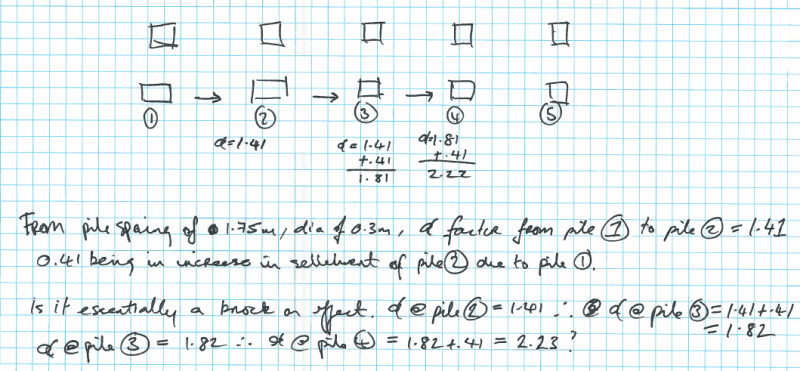Some of the confusion may be because the
OP's example has either the pile's base is larger than the shaft (maybe a bell caisson is intended) or the math is wrong.
If the shaft and the base have the same diameter, B = 0.3 m, than A
s = 0.071 m
2, not 0.09 m
2.
Eriechch - If I use A
s = 0.09 m
2 in the equation's first term, get 1.38 E-4.
UP830 said:
1) Finding good resources for pile groups is hard...
2) ...have another pile spring stiffness formulae, please let me know its reference.
1) Pile groups are complex and poorly understood, so it is really no consensus on how to handle pile group design. In the broadest terms, pile group efficiency applies to friction piling not point-bearing piling.
There are three common equations to calculate the "efficiency" of piling in a group. None of them are particularly accurate nor do they apply to all soils or pile group layouts. Efficiency compares the load that each pile in a group can carry, compared to how much load a single isolated pile can carry (in the same soil).
n
1 = number of piles in a row (plan view of pile layout)
n
2 = number of piles in a column (plan view of pile layout)
D = pile diameter (approximate diameter for "square" piling, like steel HP or concrete)
d = pile spacing (center to center)
Note that all three formulas are based ONLY on pile size and layout geometry, not soil properties. Also, the formulas apply ONLY to rectangular or square layouts.
There are other ways to calculate pile efficiency, I like "Feld's Rule", it is very simple:
Look at each pile in a group (any layout), one pile at a time, and reduce pile efficiency by 1/16 for each adjacent pile (in any direction, including diagonal). Average results for all piles to get efficiency of the group. Feld's rule does NOT consider pile spacing - I just keep spacing in the commonly accepted 3 x pile diameter range.
Once you have a handle on pile efficiency, have to look at "pile group block failure"... but not right now.
2) At the most fundamental level,
Hooke's Law: k = f x e.
Consider a simplified point-bearing pile (no skin friction)
The "pile spring constant" (N/mm) can be calculated from the pile material's
Modulus of Elasticity. Pile elastic shortening under load can be calculated.
The soil-pile spring constant can be determined by a pile load test:
In my sketch the red line (approximately) parallels the pile settlement graph. The slope of the red line is the soil-pile spring constant. Note that a typical pile load test is carried out to twice the pile design load... to make sure there is enough data to get line slope up to, and just beyond design load. Soil-pile settlement under load can now be calculated.
![[idea] [idea] [idea]](/data/assets/smilies/idea.gif)
![[r2d2] [r2d2] [r2d2]](/data/assets/smilies/r2d2.gif)
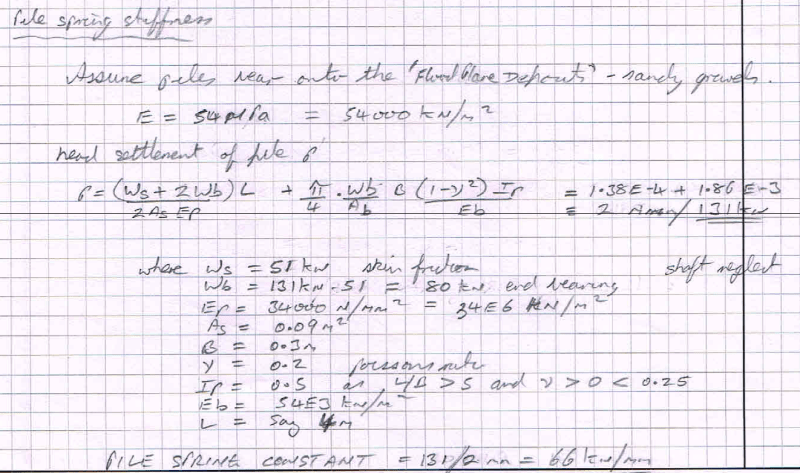


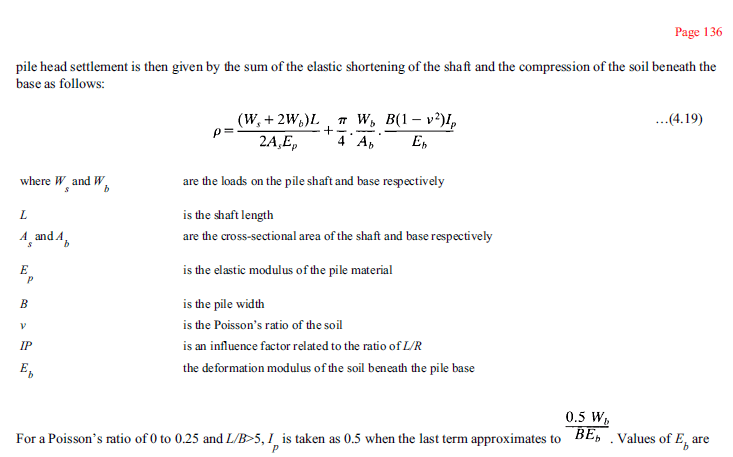

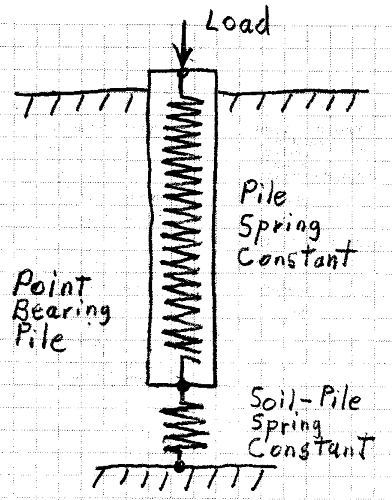
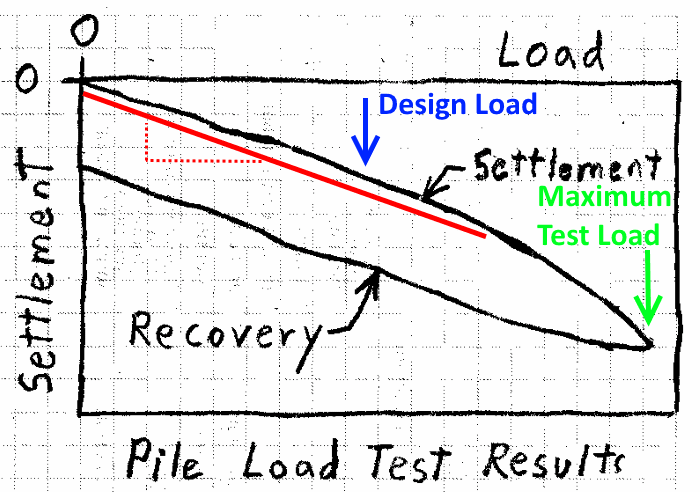
![[idea] [idea] [idea]](/data/assets/smilies/idea.gif)
![[r2d2] [r2d2] [r2d2]](/data/assets/smilies/r2d2.gif)
